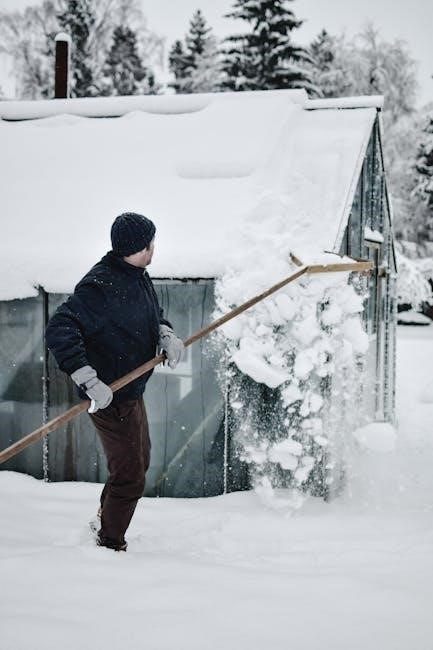bunco sheets pdf
Discover bunco sheets pdf for easy score tracking, featuring various formats and sizes, available for digital download as a pdf file, perfect for game nights with friends and family always together online.
Overview of Bunco Game
Bunco is a popular social dice game played with 12 players, 9 dice and a lot of luck, traditionally played across three other tables and your own, requiring strategy and skill to win.
The game is typically played in rounds, with each round consisting of a series of rolls, and the team with the most points at the end of the round wins.
The game is easy to learn, making it accessible to players of all ages and skill levels, and is often played at social gatherings and parties.
The objective of the game is to score points by rolling certain numbers on the dice, and the team with the most points at the end of the game is declared the winner.
The game requires a combination of luck and strategy, as players need to make tactical decisions about which numbers to aim for and when to take risks.
Overall, bunco is a fun and engaging game that is perfect for social gatherings and parties, and is a great way to meet new people and have fun.
Importance of Score Sheets
The importance of score sheets in bunco cannot be overstated, as they provide a clear and concise way to keep track of scores and progress throughout the game.
Using a score sheet helps to ensure that the game is fair and transparent, and that all players are on the same page.
A score sheet also helps to prevent errors and disputes, as all scores are clearly recorded and visible to all players.
In addition, score sheets can help to add an extra level of excitement and competition to the game, as players can see how they are performing relative to their opponents.
Overall, score sheets are a essential component of the bunco game, and are a key factor in ensuring that the game is enjoyable and fair for all players.
The use of score sheets also allows players to focus on the game itself, rather than worrying about keeping track of scores, and can help to create a more relaxed and social atmosphere.
Types of Bunco Score Sheets
Various bunco score sheets are available, including printable and digital formats, offering flexibility and convenience for game nights with friends and family always together online easily.
Printable PDF Score Sheets
Printable PDF score sheets are a popular choice for bunco game nights, offering a convenient and easy way to keep track of scores. These sheets can be downloaded from the internet and printed out on paper, making it easy to use them at home or in a community center. The printable PDF score sheets typically include sections for each round, allowing players to mark down their scores and keep track of their progress. They also often include space for notes and comments, making it easy to keep a record of the game. Many websites offer free printable PDF score sheets, making it easy to find and download the perfect sheet for your game night; With printable PDF score sheets, you can add a professional touch to your bunco game nights and make it easy for players to keep track of their scores. They are a great option for anyone looking to host a fun and organized game night.
Digital Score Sheets
Digital score sheets are a modern and convenient way to keep track of scores during a bunco game night. These sheets can be accessed and used on a tablet or smartphone, making it easy to mark down scores and keep track of progress. Digital score sheets often include features such as automatic score calculation and real-time updates, making it easy to keep the game moving. They can also be easily shared with other players, making it simple to keep everyone on the same page. Many digital score sheets are available for download as a pdf file, making it easy to access and use them on a variety of devices. Digital score sheets are a great option for anyone looking to add a touch of technology to their bunco game nights. They are easy to use and can help to make the game more efficient and enjoyable for all players. Digital score sheets are a great way to keep track of scores and add some fun to the game.
Features of Bunco Score Sheets
Score sheets have sections for each round, table tally sheets, and space for notes, making game nights organized and fun with friends and family always together online easily.
Sections for Each Round
The bunco score sheets typically include sections for each round, allowing players to keep track of their progress throughout the game. These sections usually have space to mark down the number of Buncos, wins, losses, and ties. The sheets are designed to be user-friendly, making it easy for players of all ages to accurately keep score. With options to fit various game lengths and styles, the score sheets can be customized to suit the needs of the players. The sections for each round are usually labeled clearly, making it easy to navigate the sheet and keep track of the game. The score sheets also often include space for notes, allowing players to jot down important information or reminders. Overall, the sections for each round on the bunco score sheets are an essential feature, helping to keep the game organized and enjoyable for all players. The sheets are available in various formats, including pdf, and can be downloaded and printed for convenience.
Table Tally Sheets
Table tally sheets are an essential component of bunco score sheets, allowing players to keep track of the scores at each table. These sheets are usually designed to be easy to read and understand, with clear headings and columns for recording scores. The table tally sheets are used to calculate the overall score for each player, taking into account the number of Buncos, wins, and losses. The sheets are available in various formats, including pdf, and can be downloaded and printed for convenience. The table tally sheets are a crucial tool for keeping the game organized and ensuring that all players are on the same page. They help to prevent errors and disputes, and make it easy to determine the winner at the end of the game. With table tally sheets, players can focus on having fun and enjoying the game, rather than worrying about keeping track of scores. The sheets are a valuable resource for anyone hosting a bunco game, and are a must-have for any serious player.
























